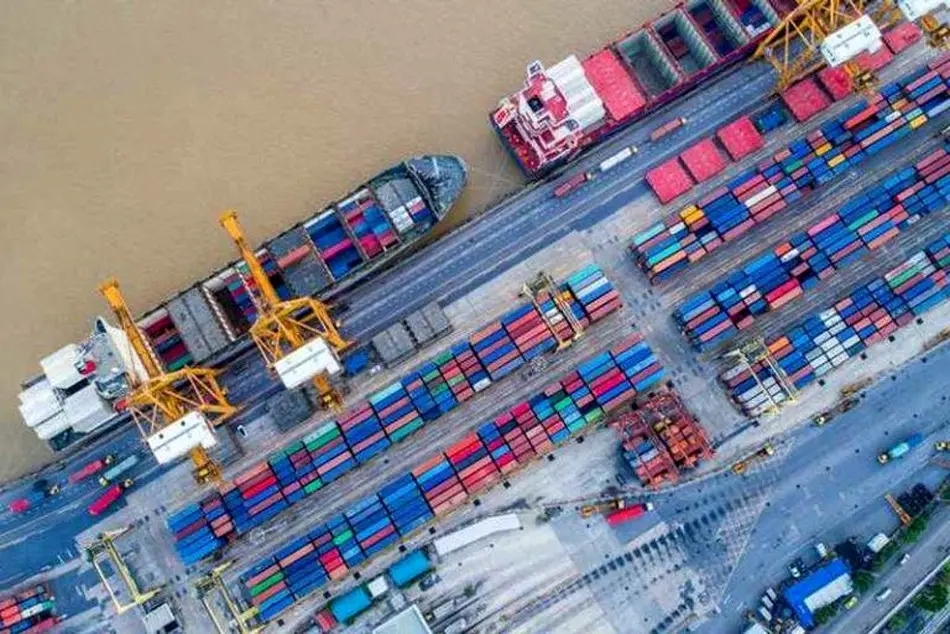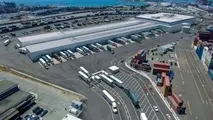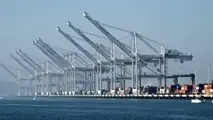Ports Without the Right Infrastructure Need a New Shore Power Solution
There's a growing demand for shoreside power, but many ports lack the electrical infrastructure to support traditional systems. A new solution is required.

A series of global supply chain shocks have tested the global ports system’s resilience. Although signs point to a better year for supply chains in 2023, improving resilience is critical to ports’ success and the continuity of trade flows. Methods for future-proofing ports’ competitiveness and profitability are two-fold: ensuring consistent, intelligent operations and delivering these services in line with increasingly stringent environmental mandates.
New regulation requirements are putting further emphasis on ports being able to provide greener solutions. The California Air Resources Board’s new compliance requirements for the At Berth Regulation came into effect on January 1, 2023, meaning that container, reefer and cruise vessels, already included under the existing rule, are transitioning to the new regulation.
Similarly, momentum is gathering around the European Commission’s plans “to regulate access of the most polluting ships to EU ports and to oblige docked ships to use shoreside electricity” as plans for the EU Emissions Trading Scheme formalise within its Green Deal. These ambitions also sit alongside growing political pressure in the US and across major ports in South East Asia to regulate emissions, including NOx and PM, better.
Yet, ensuring a reliable power supply is challenging for many ports. The electricity connections in many ports aren’t up to scratch or have their supply compromised. For example, ports with close connections to nearby major cities with their own huge electricity demands ports lack the power, with regional blackouts to blame. Add to the mix climate change and the subsequent impact of adverse weather events on ports. Hurricanes on the Gulf Coast, for example, have become regular causes of blackouts. Solving this challenge requires power sources that are flexible and reliable.
Ports must also balance reliability with competitiveness when looking at ports’ ability to handle certain cargoes. Over the next three years, Drewry expects seaborne refrigerated cargo growth of 3.7% per year, double that of dry bulk. However, unless there is reliable power to refrigerated cargoes, the cold chain will break, and perishable products will quickly spoil. Traditionally, ships’ auxiliary engines have provided this power, but there is increasing pressure from consumers and residents of port cities for green electricity instead. Shoreside power – if it’s sustainable and from green sources – radically reduces the emissions from fossil fuel-powered auxiliary engines of ships at berth. Ports such as Los Angeles – working in partnership with CARB – have demonstrated leadership in this area and shown what’s possible.
Pressure is now piquing amongst European ports to retain customers within a new regulatory climate. There are growing concerns, as raised by the Federation of European Private Port Operators in December 2022 that the scope of the EU ETS and FuelEU could harm the competitive position of the region’s terminals with shipping companies potentially diverting cargoes to non-EU ports to save costs. Enabling clients to meet environmental requirements and maintain profitability is crucial, and low emissions shoreside power plays a role in EU ports’ defence.
In July, the European Sea Ports Organisation (ESPO) outlined what it sees as the major challenges for the roll-out of shore power. They mainly relate to the cost of deploying onshore power supply and the lack of business case, even if all OPEX costs are charged for, and a depreciation cost for the infrastructure is borne by the users. Additionally, at this stage, there is usually not enough grid capacity to provide several vessels at the same time. Where onshore power installations are in place, the price is currently often preventing users from plugging in. Moreover, in most countries, the port authorities pay a fixed cost all year long for large capacity that they often only need during a few months (e.g. the cruise season).
Connecting and disconnecting operations differ between ship segments. On container terminals, there is staff permanently available; on cruise terminals, there is not, says ESPO. Therefore, extra staff are required on the quay during the connecting and disconnecting operations as well as in between on standby in case of emergency. These operations require skilled workers, and the weight of the cables implies that at least two people are needed.
The shore power infrastructure is tailor-made for every ship type, says ESPO, making the long-term planning and investment complicated. Installing a fit-for-all system does not seem possible.
This is a demand that e1 Marine is positioned to meet through the development of its containerized methanol to hydrogen generator. But bringing new solutions to maritime applications is a long and complex journey that is building a bank of new learnings and adaptations along the way – many of which relate to many other renewable energy or technology initiatives. For one example, we have found that integrating components of different levels of maturity can be a challenge. There is also no uniform code that can be resourced for the acceptance of this new technology into any facility. While standards and regulations can be available for certain components, no regulation governs the integrated units combining new technologies.
The containerized unit’s design must be adopted to fit local markets and conditions, not just in terms of product output, voltage, frequency etc., but also in compliance with local regulatory requirements, port authorities, city authorities, state international marine regulations etc. The regulatory hurdles of introducing new technology into ports are vast and complex with this variety of stakeholders.
Having a working integrated product is key. Vessel owners and operators understandably want tangible products and are hesitant to commit to ideas on paper. They are enthused about feasible and available products within reasonable time frames and not in the early stages of development. In this regard, e1 Marine has the advantage of having a working prototype system available through one of our stakeholders, Element 1 (a land-based containerized energy unit) and the Hydrogen One tugboat.
The successful development and implementation of clean, renewable energy sources to meet the growing demands for green shoreside power is ultimately dependent on collaboration and new ways of working between all stakeholders: developers, port authorities, port operators, local authorities and end users. Change is happening, and although there is a reluctance to be a first mover and trial the use of new solutions, especially if the financials work differently, it is evident that ports that aren’t improving their resilience and sustainability risk losing business that will be hard to attract back.
The opinions expressed herein are the author's and not necessarily those of The Maritime Executive.



